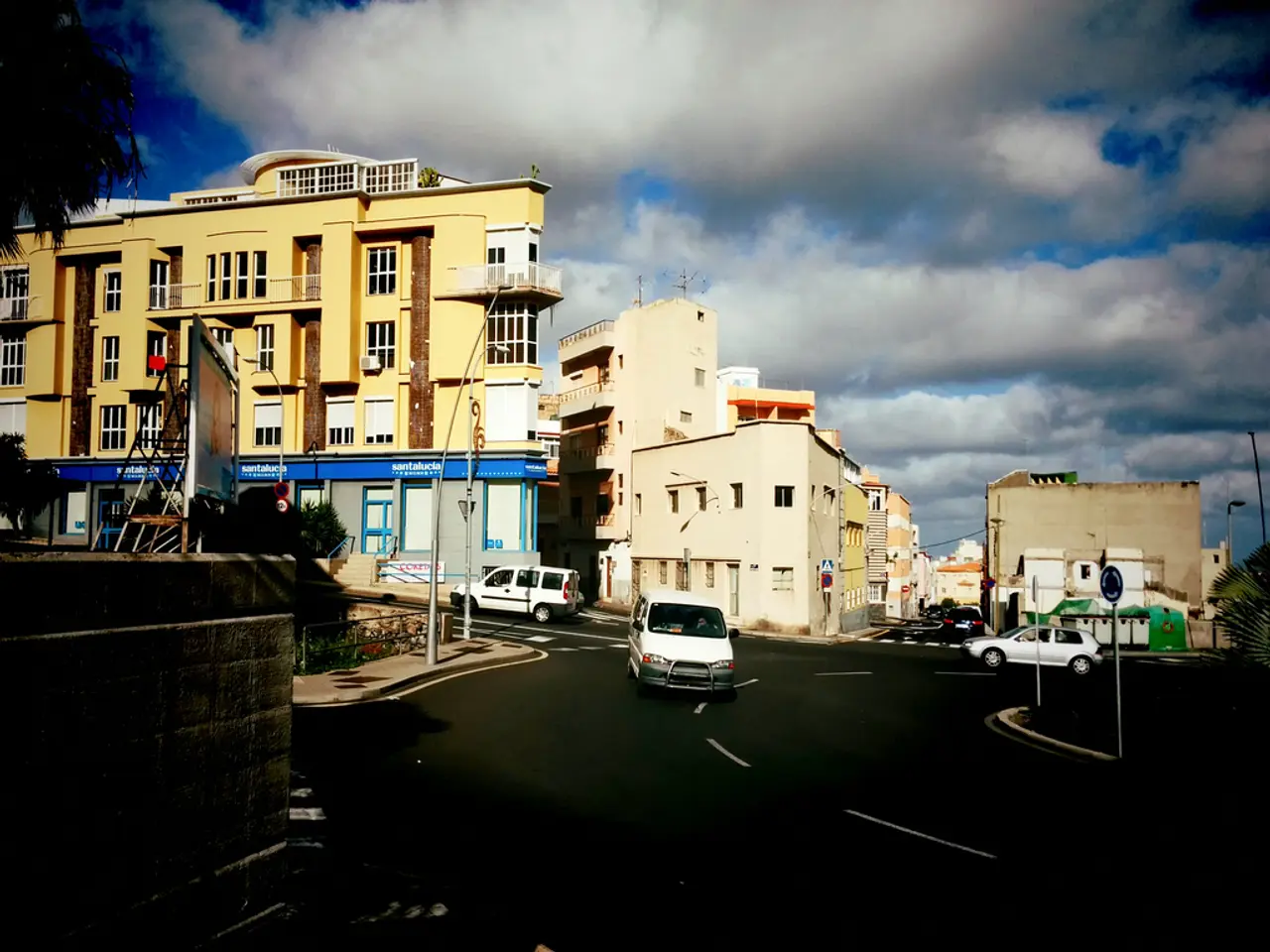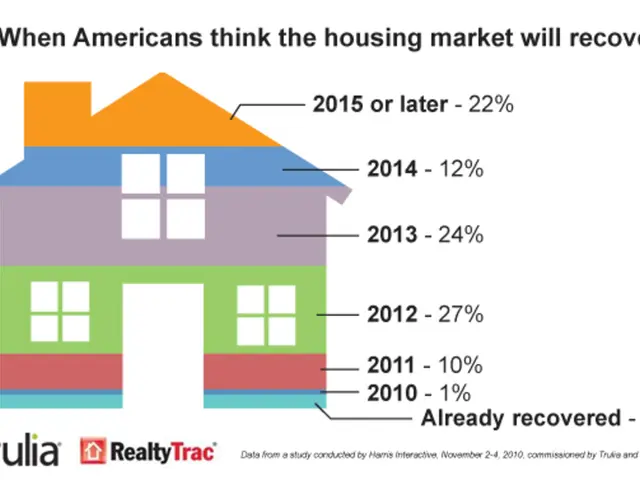Experience Manhattanhenge once more: Tips for witnessing New York City's remarkable sunsets.
================================================================================
In the bustling city of New York, a modern phenomenon known as Manhattanhenge captivates locals and tourists alike. This unique event, which occurs twice a year, transforms the city's skyline into a breathtaking spectacle as the setting sun aligns perfectly with Manhattan's east-west streets, creating a striking visual effect of the sun framed between skyscrapers.
Historically, Manhattanhenge is tied to the design of Manhattan’s street grid, which was laid out in 1811 and set at an angle roughly 29 degrees off true east-west to accommodate the island’s shape. The name “Manhattanhenge” is a playful nod to Stonehenge, the ancient prehistoric monument in England, known for its solstitial solar alignments.
While Manhattanhenge is a modern urban event celebrating human-made city planning and its solar coincidence, Stonehenge represents ancient human interaction with astronomy and the natural world for spiritual and practical reasons.
Stonehenge, a megalithic stone circle constructed around 2500 BCE, is famous for its precise alignments with the solstices, especially the summer solstice sunrise. Its significance is primarily archaeological and cultural, as a sacred site likely used for religious and astronomical purposes by ancient peoples. Its sun alignment marked important seasonal changes critical to agriculture and ritual.
| Aspect | Manhattanhenge | Stonehenge | |---------------------|-------------------------------------------|-----------------------------------------| | Date of Origin | Modern; linked to 1811 NYC street grid | Circa 2500 BCE prehistoric construction | | Nature of Structure | Manhattan street grid and skyscrapers | Megalithic stone circle | | Type of Alignment | Sunsets aligned with streets twice yearly| Sunrise/set aligned with solstices | | Cultural Significance| Urban cultural phenomenon, photography attraction| Religious, ceremonial, astronomical site| | Location | Manhattan, New York City | Wiltshire, England |
Manhattanhenge serves as a modern homage to solar alignments but mainly provides visual spectacle and appreciation for city design, whereas Stonehenge had deep ancient cultural and ritual importance connected to the solar calendar. Both illustrate humanity’s enduring interest in the sky and its rhythms but in very different contexts.
This year, Manhattanhenge will occur on the evenings of July 11 and 12. On July 11, the full disc of the sun will hover over the horizon during Manhattanhenge, while on July 12 only half of the sun will kiss the city streets. If missed this year's Manhattanhenge sunset, an opportunity to see "Reverse Manhattanhenge" (sunrise framed by New York's buildings) is available on November 28 and 29, and again on January 11 and 12.
The best places to see Manhattanhenge this week are 14th Street, 23rd Street, 34th Street, 42nd Street, and 57th Street. Jackie Faherty, an astrophysicist at the American Museum of Natural History, calculates the dates for the Manhattanhenge event. Faherty emphasizes the importance of understanding how science, particularly astronomy, continues to guide modern life and the importance of using scientific thinking in everyday life.
As we witness the spectacle of Manhattanhenge, let us take a moment to reflect on the long-standing intertwining of humanity and astronomy, and appreciate how our fascination with the cosmos has shaped our cities and cultures.
- As we admire the visual spectacle of Manhattanhenge, we are reminded of the ancient Stonehenge, a megalithic stone circle that similarly showcased our ancestors' fascination with astronomy and natural history.
- Just as modern city Planning in Manhattan's street grid has led to the phenomena of Manhattanhenge, one can imagine ancient civilizations shaping their homes-and-gardens to align with significant cosmic events, much like Stonehenge.
- Whether it's a modern urban event like Manhattanhenge or an ancient spiritual monument like Stonehenge, our lifestyle has always been intertwined with the rhythms of the planet and the sky above us.




